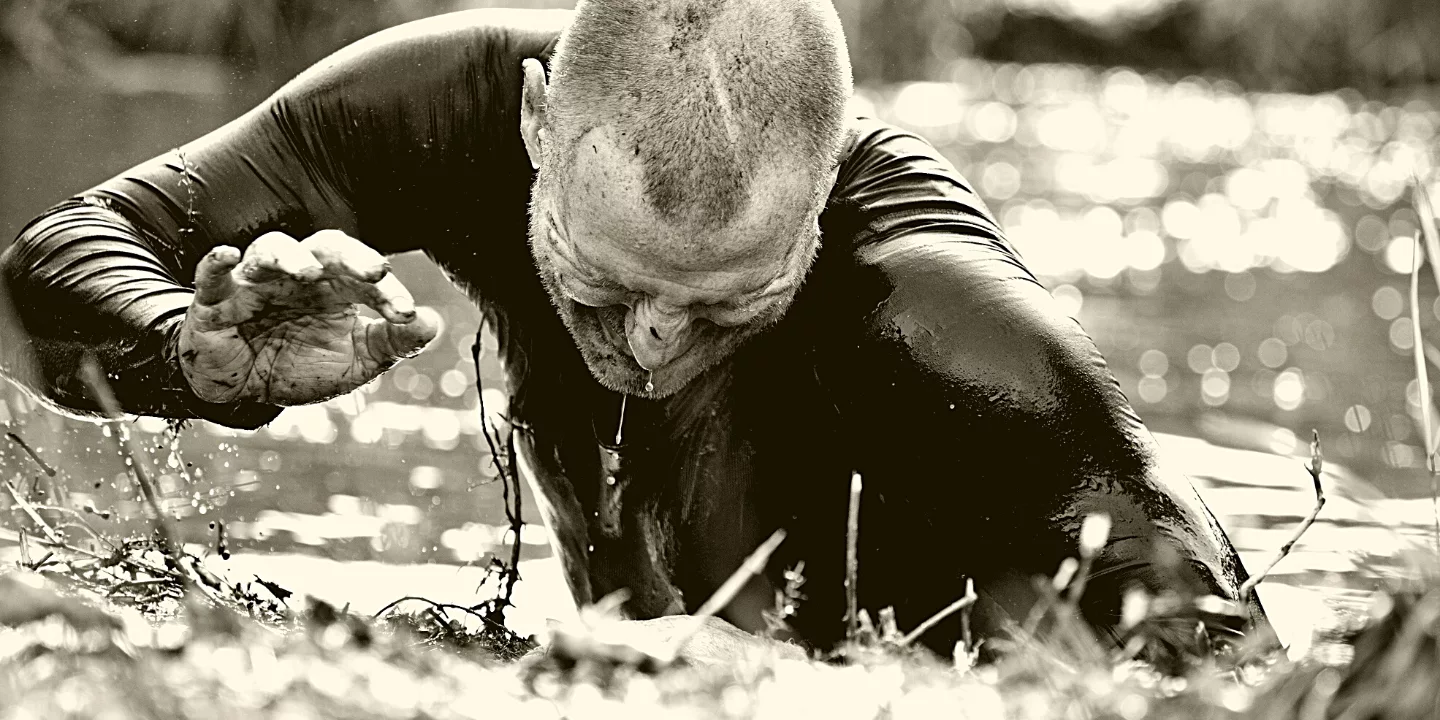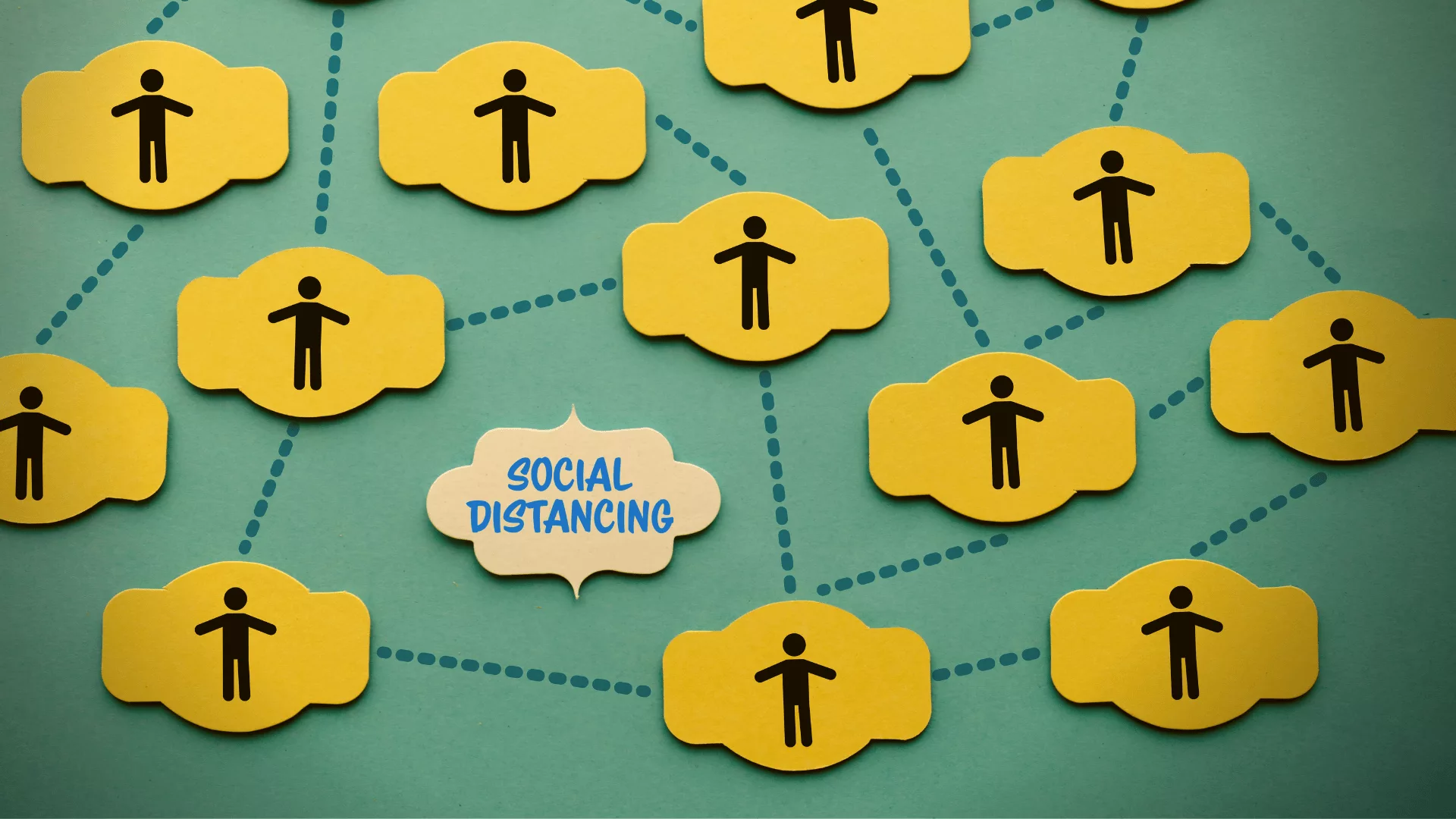business
Your Christmas Coaching Survival Guide...
Your Christmas Coaching Survival Guide…
By Karen Amos
So here it is – my coaching guide to surviving Christmas!
When I say ‘Christmas’, I’m talking about the general Christmas celebrations we have in the UK, not the religious festival. I do feel these are two markedly different things.
So how did it all get so out of control?
There are reports of Christmas being commercialised since the late 1800’s and perhaps even before, so it’s not necessarily a ‘new’ thing. Santa had been illustrated as dressed in red in the mid 1800’s, but Coca Cola famously linked Santa to its brand colours. The reason? It was difficult to sell fizzy drinks in winter! We’re now in the situation where parents take their children to see the Coca Cola truck and ‘ooh’ and ‘aah’ at the spectacle. Well that clearly worked didn’t it?
The 1947 film Miracle on 34th St is basically about the over-commecialisation of Christmas in a store. Did you know that even Rudolph the red-nosed reindeer was invented in 1939 by another department store to sell merchandise?
So, this retail extravaganza really isn’t that new – along with the stress that we associate with the build up.
The evergreen Christmas stress is tough enough without all the financial concerns people are now having. So, if the thought of Christmas is causing you more stress than pleasure, this is the perfect opportunity to do something different and have the Christmas you really want.
I say this as someone who took charge of their Christmas years ago. I got tired of the retail-obsessed, drink-and-eat-all-you-can-fest, so started my own tradition of going to the Cairngorms for Christmas. My husband and I have one low-key ‘Christmas do’ with our family before departing to the Highlands in our campervan. We walk in the snow on Cairngorm summit on Christmas morning, before having an expensive bottle of wine and tapas and other nibbles for Christmas ‘dinner’.
Lots of people say they are jealous of us being able to do this, but they could just as easily do this themselves if they chose. It’s completely in anyone’s gift to change.
But it’s not that easy?
My advice is to think about your absolute ‘must have’s’ for Christmas – what’s really important? It’s unlikely to be a cuddly toy vegetable from a discount supermarket, or a huge credit card bill and a 7-day hangover!
Here’s a great coaching question to take a step out of your usual mindset:
‘If I could do anything I wanted at Christmas – what would I be doing?’
Your ‘dream’ Christmas may not be possible, but often it’s nearer than you think.
Once you’ve answered this question, pick out the elements that make Christmas special for you, what’s given you joy in the past – and also which bits would you gladly bin!
Then work out all the ways, including seemingly impossible ones, to make this happen.
It often helps to do this with someone else, so they can help you find the solutions and work-arounds.
A big fear is that family and friends will be upset or offended if you’re not doing what they want, so remember:
#1 – You can’t control other people – just yourselves.
#2 – There may be ways you can spend time with family and friends, but in a way that still meets your needs.
#3 – Even if some people are disappointed, they’ll get over it! Let’s face it, by new year, Christmas is already a distant memory for most people.
#4 – Stick to your guns if you’re doing something radically different. Once you’ve made the change, it’s much easier in future to continue with this.
This was definitely the case on our first year going to the Cairngorms, but now everyone expects us to do this and it’s no big deal.
If you’re worried about what other people will think, or have some ‘shoulds’ or ‘oughts’, ask yourself ‘who says?’
And what will actually happen if you don’t do it everyone else’s way? The answer is usually ‘not much’.
Another idea for changing things is to give your Christmas a theme – for example, you could hold an ‘eco Christmas’ where you waste as little as possible, or a ‘sharing Christmas’ where everyone pitches in, or even a ‘charity donation Christmas’.
Think about ways you can make this transition:
- Buffees instead of huge meals
- Everyone brings something
- Everyone brings their own glasses
- A Secret Santa where you just buy one present for each member of the family
- Going out for a walk instead of a huge drinking session
- ‘Buying’ a grand day out to be used later in the year, instead of shop-bought gifts – we found our elderly parents would much prefer a special day out, than yet more ‘stuff’ they don’t need!
Just remember – the constant messages we see and hear are designed for one thing – to help businesses part you from your cash.
I have a business too – I get it – and there’s nothing wrong with buying a nice gift for someone. Let’s just do it in a way that makes everyone happy.
What are your top tips for a stress-free Christmas?
Check out our Positive and Productive Wellbeing programme for schools. We offer many more coaching tips and approaches to help you manage your time and stress and build a positive mindset. CLICK HERE to check out our web page for more info, or to book.
Or call us for a no-obligation chat on: 07714 855757
or email: [email protected]
Karen Amos is an executive coach and founder of BrightBird Coaching & Training. She supports leaders and managers to get the best out of themselves and their teams. She brings a down-to-earth, practical approach to improving working lives through better leadership, communication and working relationships.
Your Christmas Coaching Survival Guide...
Tired of playing the bad guy? Why not play yourself instead....?
By Karen Amos
‘I’m not scared of playing the bad guy’.
I hear this phrase so many times on my travels as a coach and I have to confess, I’ve said it myself in the past.
But let’s just unpick this for a moment. Why when we need to give negative feedback, or have a difficult conversation with someone, do we feel we’ve no option but to be the ‘Bad Guy’? Shouldn’t we just be doing what’s right? I know from my own experience that there are many reasons for saying this phrase.
Here are a couple:
1. Fear – Of what the other person might do or say, or of things getting out of control. Sometimes it’s the fear of not being liked.
2. Lack of options – Often I felt low on resources – either of potential solutions to the problem, or lack of interpersonal skills to deal with this.
The worst part of this was for me, I know I’m not a ‘Bad Guy’. I now recognise I’m a good, kind person, who likes to be fair to others and always tries to do the right thing. This is most of us right?
This situation is a good example of where Authenticity pays dividends. What if you didn’t need to be the ‘Bad Guy’ and could instead, get the right result just by being yourself? Sounds good? Just think, less anxiety, sleeping well, knowing you did your best, increased personal responsibility for the other person and less of the ‘blame game’…. The list goes on…..
The secret is to take a coaching approach to giving feedback and difficult conversations. This approach means you’re not there to ‘fix’ the person, but to work collaboratively with them to find a workable solution. The first step is to be clear what you and they want out of the situation and to work together to find the solution.
Yes, I acknowledge there may be occasions where the person concerned refuses to accept their personal responsibility and you’ll have to deal with this accordingly, but from experience these people are in the minority.
By implementing this Authentic Leadership/coaching approach, I've found that raising issues with people more often than not, results in a positive, constructive outcome. I frequently hear examples from my clients where they've been dreading a conversation, but by implementing this approach have had surprisingly positive outcomes. For example, people who have been placed on performance management have still thanked their manager for their support and as a result have addressed and resolved the issues raised.
No-one likes giving negative feedback and certainly no-one likes to receive it, but to know you’ve truly done your best to work with the person to find a positive solution to the problem must surely rest better with you than having had to play the ‘Bad Guy’ again.
If you'd like to find out more about our value for money in-house Managing Difficult Conversations training courses, click here:
If you'd like to find out more contact us on:
Tel: 07714 855757 or email: [email protected]
Karen Amos is an executive coach and founder of BrightBird Coaching & Training. She supports business owners and managers to get the best out of themselves and their teams. She brings a down-to-earth, practical approach to improving working lives through better leadership, communication and working relationships.
Overwhelm - taking those first steps out of the swamp...
Overwhelm - taking those first steps out of the swamp...
By Karen Amos
The problem with overwhelm is... well, it's overwhelming!
Yes, I realise that's pretty obvious, but if it's really that obvious, why don't we easily sort it out and feel more in control?
Because... yes, that's right - it's overwhelming. The Cambridge dictionary describes overwhelm as 'to be too much to deal with'. (1.) So there you have it - how can you deal with something, which by definition leaves you feeling as if you can't?
Overwhelm sucks us down and dulls our responses and behaviours, sapping your energy and confidence. It's a swamp land for your productivity and wellbeing.
So here's how to deal with the stuff that feels like it's too much to deal with...!
1. Accept there is no 'one-step, easy answer' to overwhelm
Overwhelm means different things to different people, at different times. There are often several contributing factors, each of which compound the other. This is why we can't often find a way through - and why we often don't even know where to start. Acknowledging what's going on for you - and importantly, making a conscious decision to change things for the better is a great start though.
2. If you don't know where to start, start in the easiest place
Because overwhelm then leaves us powerless in its grip, we often do nothing. We don't know what the 'best' thing to do is, or what the solution is. So we do the rabbit in the headlights routine. Often though, just taking one small step can start to lift us out of the swamp. And each step out, increases our capacity to gain control, energy and impetus. So don't wait for the whole solution, just take the one small, easy step you know will lead you in the right direction.
3. Overcome the fear of switching off
Whilst we know we would benefit from taking proper time out, this can actually feel pretty scary when you're under pressure. The problem is that trying to plough through is often counter-productive, leaving us even more exhausted, but the bogeyman of letting go can really hold us in its grip. Rationalising how you will benefit from even a short amount of time out will help you make that decision. Remind yourself for example, how much more productive you will be the next day if you turn off your smart phone and have an early night, or even just finish work at a normal time for once, to go do something nice with your loved ones.
4. Break tasks and activities down
If we see a large, complex or long-term problem, it's hard to know where to even start - and the positive feelings of achievement aren't so easily found as we try to plough our way through. Instead, break your goals/outcomes down into smaller steps that you can tick off frequently. That way you can see your progress and more importantly gain the feelings of satisfaction and control that come with this. This is even true of smaller, personal habits - e.g. saying you're going to do physical exercise/training 3 times a week can seem too much and mean you don't even start. However, saying you'll go to spin class on Monday evening, do a 30 minute run on Wednesday and a long walk at the weekend can much more easily be planned in - and ticked off each day.
5. Get your priorities right
When we feel so overwhelmed with our workload, there's a danger that we end up working on completely the wrong things. These often swing between the jobs (or people) who shout the loudest, or the things that are easiest and least risky. Neither of these necessarily are the right thing though. (And if you think this isn't you, just remind yourself about the times you've ended up doing the dusting rather than tackle a gnarly task! Yeah, of course, we'd all choose dusting as our new favourite hobby right?!) Instead, take a few minutes to check through everything that's going on and ask yourself:
- What could and should be dropped off my to-do list (or even completely off my radar) at this point in time?
- Are there any quick wins here, that will buy me more time and energy moving forwards?
- What's the most important thing here?
- What are the things that no-one would really notice if I didn't do?
- If I assume I don't have time or energy to do everything that's expected of me, what will I have to put down first?
- Where's the 'noise' coming from? Is this legitimately something I should be listening to? If not, how do I tune it out?
If you were only going to do one thing right now, I'd recommend taking a few minutes away to ask yourself some of these questions. Then take one step - just one - that will start to take you in the right direction and lead you out of the overwhelm swamp.
References:
If you would like to find out more about how you and your teams can improve their time management and productivity, whilst minimising stress and overwhelm, check out our new Positive and Productive online programme.
For schools
For Business and VCSE organisations
For an informal, no-obligation chat about how we can help you, call us on 07714 855757, or email [email protected].
 Karen Amos is an executive coach and founder of BrightBird Coaching & Training. She supports under-pressure leaders and managers to get the best out of themselves and their teams. She brings a practical, down-to-earth approach to improving working lives through better wellbeing, leadership, communication and working relationships.
Karen Amos is an executive coach and founder of BrightBird Coaching & Training. She supports under-pressure leaders and managers to get the best out of themselves and their teams. She brings a practical, down-to-earth approach to improving working lives through better wellbeing, leadership, communication and working relationships.
Workload – Is this the next Emperor’s new clothes?
Workload – Is this the next Emperor’s new clothes?
By Karen Amos
Exhausted. Overwhelmed. Inundated. This is what I’m hearing and seeing around me, from clients, associates and on social media.
There’s too much work to do and too little time to do it in. And yes, there are so many things going on right now, resulting in endless firefighting and over which we have very little control. Vast swathes of staff teams going off sick with various illnesses, of which covid is only one, as an easy example.
I get the feeling of helplessness that goes with this, but can’t help but think there are also many things we CAN do something about, but often don’t.
As we come up to the festive season, this is never more needed. What should for many be a time of holiday and celebration, becomes a source of stress, anxiety and overwhelm.
This is where our mindset comes in.
Working out what we can control or influence and not expending mental and emotional energy on the things we can’t, will ensure we expend our energy in the right way. The good old Stoics and latterly Stephen Covey hit this on the nail.
That’s only part of the story though and I’m on a mission to call this out. I’m going to be the little boy to the Emperor’s New Clothes of workload…
Here are the basic facts of the modern work-life as I see it:
1. We will NEVER complete all of our workload
2. We only have a finite amount of time and energy available to us
So let’s unpick this:
1. We will never complete all of our workload.
We don’t want to think we’re failing, so we try to fool ourselves that one day… one day… we will have ticked all the tasks off on our to-do lists. The fact is that there will always be more that could or should be done. We can always do more, make things better, build on the last job… on it goes.
2. We only have a finite amount of time and energy available to us.
Despite our best efforts there are only 24 hours in a day and you will never have the energy to consistently work huge proportions of this – not if you want to stay well that is! Even if you had 36 hour days, you’d only have a certain amount of energy you could expend.
So this is why I liken workload to the Emperor’s New Clothes. No-one is calling this out. So I am.
If we accept these 2 facts as accurate, we’re left with 2 choices:
1. Accept the inevitable frustration, despair, meltdown and ill health
2. Make a mindshift in how we think about and approach our work
Doesn’t seem possible? Then check out this example:
It’s the Monday, a week before your much needed holidays. All you can think of is getting away and forgetting about work for a week or so. So you have great intentions and have made a list of all the things you’re going to achieve from your to-do list before you go.
By the end of day one, you’ve made very little inroad. In fact, you’ve actually added to your list.
By mid-week, you’re feeling the pressure. You’re nowhere near getting those big chunky pieces of work out of the way and it really doesn’t look like you’ve time to do them before Friday.
By Thursday, you’re starting to cross off some things that ‘can wait’.
By Friday, you’re crossing off most things, deciding they’re probably not that vital and guess what? For many of them, you’ll never even add them back onto your list when you return!
Which just goes to prove that much of the issue isn’t about WHAT we’ve got to do, it’s WHAT OUR ATTITUDE IS to what we’ve got to do.
Of course, there are many tools and techniques we can effectively use to manage our time and workload. I teach many of these in my training programmes, but the fact is, these alone will not solve your workload issues.
For example, I’d always advocate that people use lists to help lighten your cognitive load amongst other things. The problem is that if we don’t approach what we put on our lists with the right mindset, we’ll find ourselves writing them on kitchen rolls they’ll be that long.
Let’s face it, none of us are going to be on our death bed saying, ‘At least I got to the end of my to-do list!’
The solution to this I believe, lies in having better quality conversations – with ourselves, our managers and our teams. A conversation that says, ‘OK, this work has just landed and I’m already at or over capacity with my workload.’
- What do I need to do myself?
- What do I need to be saying to others?
Here are some coaching questions to get you started:
- If I accept it’s impossible to get to the bottom of my to-do list – what needs to happen to ensure I can still do a good job and stay well?
- What if my wellbeing was as important as getting my jobs done?
- How can I work more collaboratively with others in a way that helps everyone?
- How can I work more efficiently?
- What happens when I prioritise my work better?
- What should my response be if someone comes to me with more work?
One of the things we can say could be to our managers, at what ever level. Easier said than done in some cases I admit, but what if we were to say, ‘I’m already at capacity. Can you help me work out what I can do and when?’
I’m not saying this is always the case, but I confess that on occasions in the past, I have been that manager. The one who was so overwhelmed that when another tranche of work came in, I did a ‘dump and run’ on my team.
The result? An over-worked and disgruntled team and myself, feeling like I’d sold my values down the river.
The thing is that the solution doesn’t necessarily mean appointing more staff – although how can we ever present a valid business case if we don’t acknowledge what’s there? Often though, more staff aren’t needed, just the right support, training and advice and some better communication.
In order to truly change things for the better we need to own up. To shout out if our workload isn’t possible, as there will never be a positive change if we don’t.
If you would like to find out more about how you and your teams can improve their time management and productivity, whilst minimising stress and overwhelm, check out our new Positive and Productive online programme.
For schools
For Business and VCSE organisations
For an informal, no-obligation chat about how we can help you, call us on 07714 855757, or email [email protected].
 Karen Amos is an executive coach and founder of BrightBird Coaching & Training. She supports business owners and managers who are feeling the pressure, to get the best out of themselves and their teams. She brings a practical, down-to-earth approach to improving working lives through better leadership, communication and working relationships.
Karen Amos is an executive coach and founder of BrightBird Coaching & Training. She supports business owners and managers who are feeling the pressure, to get the best out of themselves and their teams. She brings a practical, down-to-earth approach to improving working lives through better leadership, communication and working relationships.
Positive & Productive - News about our NEW beta programme!
BREAKING NEWS!
We're delighted to announce our new Positive & Productive online programme - due to commence January 2021!
This programme will bring you all the aspects and content from our existing popular training workshops, including:
- Time Management & Work-Life Balance
- Managing Stress & Building Personal Resilience
- Building Confidence
The programme will consist of a combination of:
- Short recorded webinars
- Workbooks and training resources for each session
- Live, online Q&A's on a variety of subjects
- An online community to share ideas, progress and support
Check out our course leaflet for more information:
SCHOOLS
BUSINESS & ORGANISATIONS
We're bringing this at a special discounted price of £49 per person, so grab your place whilst they're still available.
We are able to offer significant discounts for group bookings - get in touch for a no-obligation quote!
If you'd like to find out more via a no-obligation chat, you can contact us on 07714 855757 or email [email protected]
To make a booking, complete our booking form HERE
Want to achieve more? Start at the end…
Want to achieve more? Start at the end...
By Karen Amos
September. Putting aside the nagging feeling I’ve blinked and missed the last 6 months, I’m starting September with a new energy. There’s something about this time of year that smells of new starts and exciting possibilities, no doubt from early conditioning of starting back at school for a new term, with new shoes and fresh unwritten exercise books...
Whatever the reason, it’s a great time of year to utilise all that new-found motivation. The problem is, it’s so easy to lose it again amongst all the ‘chores’ that need doing – both at work and personally. I found myself in such a place this week, feeling overwhelmed with the amount of tasks, appointments and activities in front of me. The issue with overwhelm is that it can stop you in your tracks, or at best leave you highly ineffectual, casting around aimlessly, or immobilised by indecision.
Building Better Habits...
Then I remembered good old Stephen Covey – You know, the ‘7 Habits’ guy! As a coach, one of my favourite habits is ‘Begin with the End in Mind’. The premise is that we first need to create a mental blueprint of what we want to achieve before we physically take action. ¹
Coaching follows the same principle. If you don’t know your destination, how will you know the right actions to take? This is why so many people are unproductive in their work, as they focus on tasks and activity, rather than outcomes. That’s the reason John Whitmore started the coaching GROW Model with ‘G’ for ‘Goal’. We need to first work out where we want to go, then work out how we’re going to do it.²
Start Your Day As You Mean To Go On...
One great habit to get into, is to spend the first 10-15 minutes of your day, planning. That means planning out your day, and also how this fits to your week and the medium to longer term. It’s easy to say you can’t afford the time, but I’d argue that you can't afford not to.
To start the day with no clear plan, means you’re trusting to luck that you’re working on the right things, with no clear measure of whether you’ve been successful or not. You'll inevitably end up bowing to external pressures and losing track. Essentially, you need to train yourself to consistently think strategically about all aspects of your work and business. Strategy shouldn't be something we visit now and again when we've time - it should be the road map with live and work by.
Here are some helpful coaching questions to get you started:
- What do I actually need to achieve here?
- What’s my outcome for today?
- How will I know when I have achieved this?
- Is this the most important thing I should be working on?
- What’s a reasonable timescale to achieve this?
- Who can help me with this?
- What other resources will I need?
- What are my first steps?
So remember, if you really want to make an impact – begin at the end!
- Covey S.R., (2020). The 7 Habits of Highly Effective People – Powerful Lessons in Personal Change. Simon & Schuster. UK
- Whitmore, J,.(2007). Coaching For Performance - GROWing People, Performance & Purpose. 3rd Edition. Nicholas Brealey. London.
If you'd like to create more space and focus in your working life, book in for a FREE Discovery Coaching session. Click HERE to find out more.
For an informal, no-obligation chat about how we can help you, call us on 07714 855757, or email [email protected]. Or visit our NEW training pages HERE
 Karen Amos is an executive coach and founder of BrightBird Coaching & Training. She supports under-pressure business owners and managers to get the best out of themselves and their teams. She brings a practical, down-to-earth approach to improving working lives through better leadership, communication and working relationships.
Karen Amos is an executive coach and founder of BrightBird Coaching & Training. She supports under-pressure business owners and managers to get the best out of themselves and their teams. She brings a practical, down-to-earth approach to improving working lives through better leadership, communication and working relationships.
Bringing your team back into the fold? Try Huddling!
Bringing your team back into the fold? Try Huddling!
By Karen Amos
Through all the uncertainty, there’s a prevailing need to get teams back on track. Whether your teams are working remotely, back in-house or a mixture of the two – no matter, you will need to take considered action to address the current and future challenges. Teams rarely perform well by default.
I’ve written extensively about the benefits of Team Coaching as a powerful, effective tool to address team issues and performance. (Check out my blog Team Coaching - What is it and how can it help?) Whilst this can bring excellent organisational outcomes, it works best over a course of several weeks/months to bring long-lasting change and progress.
So what about Huddles?
Huddles (similar to Scrums in Agile working) are very short, frequent team meetings. The purpose and format can be as flexible as you need it to be, which makes it a perfect tool to bring together geographically dispersed, or new/re-forming teams.
In a previous management role, I was responsible for a diverse and predominantly part-time workforce. The consequence was that some people had no idea what was going on in the organisation on a day-to-day basis, how other projects were progressing and what the implications were on their own work. We set up daily, very time-limited huddles to update everyone, with the intention that people would attend on their working days. It was paperwork-light and people/solution-focused.
Here's our quick guide to Huddling…
What’s the purpose?
'Whatever you need', is the short answer. The general purpose is to have a relatively structured check-in/update for the team on a regular basis. These shouldn’t be confused with team meetings. It’s important to have a clear purpose for your Huddle, or it will just become a ‘talking shop’ or ‘moan-fest’.
Examples could be to:
- Have a regular general progress update
- Share successes
- Identify bumps in the road and seek solutions
- Share project critical updates
What are the benefits of Huddling?
Many managers are reporting that they are struggling to find the right amount of contact with their teams. During lockdown, they had contact several times a week with their staff, checking on wellbeing as much as workload and progress. Over time however, many staff are saying they’re fine and don’t need so much contact. This runs the risk of some members becoming isolated.
Here are a few ways Huddles can help:
- Help part-timers and staff working from home to be updated and included in what’s going on
- Replace the impromptu 'watercooler' conversations that are missing with homeworking
- Allow sharing of more subjective information and updates within the team that may not normally be included in more formal communications
- Generate team support and understanding – it’s easier to be understanding if you’re dealing with people face-to-face on a regular basis, even if that’s on video calls
- Up to date progress reports help shape more responsive actions and build motivation and accountability
- Opportunity to share wins as well as challenges
Are there any pitfalls and challenges to Huddles?
Absolutely! As mentioned above, Huddles should not turn into just another talking shop or protracted team meeting. Good facilitation and commitment is needed to ensure consistent attendance, time management and that everyone sticks to the agreed purposes.
In the case of large teams, you may choose to split these to keep the Huddles short. The split could be per project, working days, or just with a diverse mix of staff. Whatever works for you.
We all know that person who hogs the limelight right? If you have someone who regularly takes over, I’d suggest this is objective evidence for a manager to give some constructive feedback in their next one-to-one. This allows opportunity for some coaching on improving communication skills and relationships with the wider team.
There’s also a need for continued commitment from all team members. There are likely to be some people who claim they don’t see the point, but again, this is an opportunity to build a more inclusive and supportive organisational culture. I’d suggest a coaching conversation about what they do need, but also how they can support other people in their team.
Hopefully this has given you a positive tool to bring your staff teams back into the fold. Click HERE if you’d like to find out more about Huddles and some practical ways to implement them.
For an informal, no-obligation chat about how we can help you, call us on 07714 855757, or email [email protected].
 Karen Amos is an executive coach and founder of BrightBird Coaching & Training. She supports business owners and managers who are feeling the pressure, to get the best out of themselves and their teams. She brings a practical, down-to-earth approach to improving working lives through better leadership, communication and working relationships.
Karen Amos is an executive coach and founder of BrightBird Coaching & Training. She supports business owners and managers who are feeling the pressure, to get the best out of themselves and their teams. She brings a practical, down-to-earth approach to improving working lives through better leadership, communication and working relationships.
Herding Cats – Or the Art of Building Responsibility and Accountability
Herding Cats – Or the Art of Building Responsibility and Accountability
By Karen Amos
There’s been a theme for many of my clients recently – that of how to build effective responsibility and accountability in their teams and organisations.
It’s easy to point the finger of blame when things go wrong, but we need to be clear on our own levels of responsibility and accountability before we expect others to do the same. It’s interesting how many managers complain about feckless or inconsiderate behaviour within teams, yet have never clearly defined their own, or their team’s expectations regarding the alternative. Or often, and possibly worse, have subconsciously imposed different standards of behaviour for themselves versus that of others. Quick check: If you find yourself saying, ‘Yes, but….’ when questioned about this, you can be sure you’re part of the problem!
Building a coaching culture within organisations is a highly effective way to increase personal and collective responsibility and increase ownership and clarity around accountability. It’s often (incorrectly) seen as a ‘soft’ approach to leadership and management, to be side-lined if performance management or the ‘hard word’ is needed.
I believe this completely misses the point of what coaching is.
A coaching approach, used properly, will be the most challenging, yet effective solution to team performance for managers and staff alike. It works equally well through both informal and formal management interventions – indeed it should run through all your communications with people like the proverbial stick of rock.
 The reason for this effectiveness is the emphasis on doing ‘with’ not ‘to’ your staff. Whilst it’s easy to lecture and give the ‘hard word’, this all too frequently leads to the other person feeling victimised and powerless, which quickly leads to teams taking no responsibility for solving the issue. Let's face it, it's much easier to say your boss is a right so-and-so, rather than face up to the fact you didn't do your job right! Coaching on the other hand, requires all parties to contribute to solving the issue. This puts ownership right where it belongs.
The reason for this effectiveness is the emphasis on doing ‘with’ not ‘to’ your staff. Whilst it’s easy to lecture and give the ‘hard word’, this all too frequently leads to the other person feeling victimised and powerless, which quickly leads to teams taking no responsibility for solving the issue. Let's face it, it's much easier to say your boss is a right so-and-so, rather than face up to the fact you didn't do your job right! Coaching on the other hand, requires all parties to contribute to solving the issue. This puts ownership right where it belongs.
An example of this was seen through an executive coaching client of mine (names and details removed to preserve confidentiality). He was despairing of a long-standing member of his team who wasn’t performing, missing targets and despite several ‘discussions’ was on the verge of formal performance management procedures. Upon examination, my client when asked, couldn’t tell me the reason for the person’s performance issue, so this became the first step in his new approach, which included using coaching skills to elicit from the member of staff what they thought the solution could be.
It’s important to remember that coaching doesn’t ignore standards, organisational strategies, goals and targets. Rather it works within these to come up with alternative solutions to enable people to perform at their best.
The outcome of the situation with my client was that he did commence formal capability proceedings, but was actually thanked for his support by the member of staff, who had a clear action plan they felt they could own and implement. Importantly, they were now taking full responsibility for their own actions, but were empowered by feeling they were in control of this.
Here are a few coaching questions to help you and your team explore and build responsibility and accountability:
- What’s my responsibility here and what am I accountable for and to whom?
- Does my team/manager know and agree with this?
- Are my team clear about who is responsible and accountable for each piece of work they do?
- Are people as involved as they can be regarding agreeing responsibilities? Do we instruct, or consult regarding this?
- Do we have agreed check in points to review how this is going?
If you would like to find out more about how BrightBird Coaching and training can help you and your team to develop more accountability and responsibility, please contact us for a no-obligation chat. We offer short workshops, to multi-day training and 1:1 and team coaching.
Check out our latest Effective People Management Programme HERE.
Tel: 07714 855757 or email: [email protected]
 Karen Amos is an executive coach and founder of BrightBird Coaching & Training. She supports business owners and managers to get the best out of themselves and their teams. She brings a down-to-earth approach to improving working lives through better leadership, communication and working relationships.
Karen Amos is an executive coach and founder of BrightBird Coaching & Training. She supports business owners and managers to get the best out of themselves and their teams. She brings a down-to-earth approach to improving working lives through better leadership, communication and working relationships.
Dare you discuss your work performance?
By Karen Amos
I've just listened to an excellent episode of 'Ramblings' on Radio 4, where Clare Balding discussed mental health in business with an ex-CFO of a FTSE 250 company. He explained how he had experienced depression all his life, but felt he had to hide this in his workplace, as to disclose this would have been detrimental to his career.
He also discussed his lifelong tendency to focus on the negative - something I'm sure most of us have suffered from at some point. A classic example of this is ignoring the 99% positive feedback in your performance review and just hearing the 1% that could have been better.
Whilst there is a difference in the interventions needed to help people who are experiencing mental ill-health, there was a clear acknowledgement that there was a need to discuss areas of concern, performance and difficulties faced in the workplace. This is necessary to proactively prevent mental illness and promote wellbeing and build positive performance.
The assumption is that men find it more difficult to talk about themselves. My experience as an executive and professional development coach however, is that just as many women face the same fears and challenges. Surely, being able to do this should be seen as a strength, but many of my clients will not disclose to others that they are receiving coaching for fear of being perceived as 'weak' or 'under-performing'.
At the end of the programme Clare Balding asked the man if he would have any problem engaging with a sports coach to enhance his performance on the field. Without hesitation he said, 'No'. The implication is that this is seen as a positive move. The question then was, 'Why then are so many people reluctant to seek the same help in the workplace?' That support exists - it's also called a coach!
What's your stance on engaging someone to help your peformance at work? Are you prepared to speak candidly with someone, in confidence about your work performance, or does this feel 'unsafe' for you?
Karen Amos is an executive and professional development coach and training and the owner of BrightBird Coaching & Training. If you'd like to find out more about how Karen can help you and your team to be more positive and productive, get in touch for a no-obligation chat. Call on 07714 855757, or email [email protected]
6 Top Q&A's for Managing Conflict in the Workplace
6 Top Q&A’s about Managing Conflict in the Workplace
By Karen Amos – BrightBird Coaching & Training
1 What do we mean by conflict?
Conflict at work could mean anything from two people disagreeing on how to do a small task, to major disagreements that can become very personal between managers and team members at all levels. This has a negative effect on productivity, morale and often results in high staff turn-over, at huge cost to the business or organisation. We all have our own definition of ‘conflict’ and it’s important to understand this before we start to deal with conflict ourselves.
2 Is conflict always a negative thing?
Left unaddressed, the negative impact of conflict invariably spreads and has an adverse effect on productivity and morale. High performing teams always have some element of conflict however, that’s how they get their best ideas. The key is managing this constructively. We’ll show you practical ways to harness effective communication in your team.
3 What if I just have a personality clash with someone else?
It’s not possible that everyone in a workplace would get on well all the time. Sometimes we just have to accept that we’d never really choose to work with someone if we didn’t have to. Unfortunately, that’s not always possible, but there are constructive things we can all do that will allow us to have a better quality of working life and to be more productive for the business. We’ll cover practical ways of managing this on the workshop.
4 I'm a manager, but tend to avoid conflict wherever possible. How can I change this?
This is a really common issue. Our past experiences will influence how we behave in the present. When it comes to conflict, many people have had bad experiences with family, teachers, or poor managers in the early part of their career. Past history doesn’t have to dictate the future however and once managers are equipped with the right tools, they can start to build their own confidence in managing and pro-actively avoiding conflict in their teams. One way we can do this is by trying an ‘experiment’. By this, we mean trying out a new approach in a safe environment, where the negative consequences are limited should things go wrong. This is an excellent way for people to overcome fears and self-limiting beliefs in the workplace. We work though how to do this and more on the workshop.
5 My team are constantly in conflict - what can I do about this?
There’s rarely one reason why teams are in ongoing conflict. Some examples would be lack of communication, personality clashes, lack of clear decision-making and leadership and uncertainty within the team.
Whilst it doesn’t always appear to be the case, there are simple things you can do to address all of these that will start to have an immediate positive impact, both on your managers and staff at all levels. It’s really important to build a culture of personal responsibility within organisations – the success of the organisation is everyone’s business. The coaching approach in our training shows you how you can implement these tools quickly and effectively within your business or organisation.
6 What will I gain out of this training workshop?
You will have opportunity to build skills and confidence to manage conflict in the workplace, with both individuals and teams. The workshop will enable you to develop your own personal ‘toolkit’ to deal with difficult situations in the workplace in a practical way and show you how to generate positive outcomes and build personal and collective responsibility.
Date of next workshop: Thurs 30th January 2020
Click here for more details and to book











